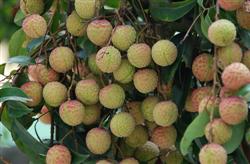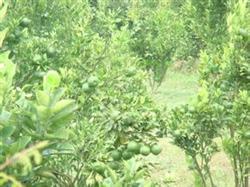Medium-ripe litchi: cultivating strong autumn shoots

Mid-ripe varieties such as Shuidong, Heiye and Feizixiao mainly cultivate autumn shoots. At present, the cultivation of autumn shoots is closely related to flowering, flowering, fruit setting, fruit growth and development and fruit quality, so strong autumn shoots must be cultivated. According to the flower bud differentiation time of mid-maturing varieties, ① planned the last autumn shoot budding time after November. However, different fruit environments will affect the ripening time of the last autumn shoot. For example, Feizixiao in Hainan Island, western Guangdong and other areas need early-maturing autumn shoots, which usually mature in October, so they begin to control them in late September in order to obtain early-maturing fruit. In precocious producing areas, the last autumn shoot should be drawn in late August or early September. If the new shoots are just ripe or already ripe, you can apply appropriate amount of compound fertilizer and nitrogen fertilizer to try to pull out the new shoots in late August. If the new shoots are still growing or have just stopped growing in the orchards, spray farmers use nucleotide 1mi twice to speed up the green turning of the leaves, and strive to pull out the new shoots in early September. The natural growth of new shoots will induce winter shoots. Nitrogen fertilizer can be applied to prolong the length of branches, postpone the ripening, or spray and control the length of shoots to control the length of shoots and speed up the ripening of shoots. Feizixiao in other producing areas is currently under normal management to continue to cultivate autumn shoots and strive for the last autumn shoots to mature in November. ② fertilized and released new shoots. When the leaves of new shoots begin to turn green or mature, compound fertilizer and nitrogen fertilizer should be applied. If the basic fertilizer of orchard is sufficient, only nitrogen fertilizer should be applied when new shoots are put. In orchards with water and fertilizer, under the current condition of high temperature and drought, appropriate amount of nitrogen fertilizer was added to the tree plate 7 days before shoot release to speed up the emergence of new shoots. ③ sprinkles and sprays water to increase the humidity of orchards and promote the emergence of new shoots. Generally speaking, when the atmospheric humidity reaches more than 75%, the new shoots can sprout normally, but the sprouting will also be affected when the temperature is too high. Therefore, in addition to ensuring the soil water content, it is also necessary to appropriately improve the humidity of the orchard microclimate. In orchards without water sources, foliar fertilizers such as agricultural nucleotides or cytokinins should be added when spraying water to the crown, which can be absorbed by leaves to facilitate the growth of new shoots. When the soil is short of water, the root system is difficult to absorb all kinds of nutrients in the soil, and the extra-root topdressing is of great help to the growth of the plant. ④ thinning keeps the orchard and crown ventilated and transparent. Litchi is a light-loving plant, the sun is not sufficient, the autumn shoot is not full, the accumulation of nutrients is less, can not guarantee the quality of flowers. Therefore, to shade the orchard or shade the crown, it is necessary to properly sparse the branches, mainly to remove the drooping branches, shade branches, overlapping branches and pest branches. The density of the crown branches is that when the sun shines directly at noon, the spot sunlight is seen on the ground inside the crown. ⑤ spray guard. Vegetative growth is the only time in a year. If it is damaged by insects, it is very wasteful and should be protected. When damaged by litchi stem borer, litchi tip moth, litchi inchworm, etc., 20% green EC can be sprayed 800 Mel 1000 times.
- Prev

Key points of citrus cultivation in March
March (sting-the Spring Equinox) spring shoot sprouting and shooting period-entering March, the climate gradually warms up, and new shoots begin to sprout. All kinds of overwintering diseases and insects will begin to do harm one after another.
- Next

Key points of Scientific Management Technology of Litchi in May
The rainy weather in May will bring difficulties to the management of litchi. Therefore, in view of the early and middle maturity varieties, the following management suggestions are put forward for the majority of fruit farmers' reference. Early-maturing varieties, such as March Red, are entering the coloring period, with emphasis on the control of litchi stem borer and downy Phytophthora.
Related
- Moge, come on! The staff of the peasant association in the producing area of cantaloupe were frightened when the crowd gathered.
- Causes and Solutions of low Fruit setting rate of Apple
- Symptoms and control measures of passion fruit virus disease
- Fruit growing lesson: how do apple orchards keep high yields?
- Can you build orchards in the mountains? What are the pros and cons?
- How to manage the coloring period of Crisson grape?
- This paper introduces the processing technology of two kinds of fig products.
- How much is a month for retired teachers in rural areas by 2020?
- How can strawberry planting increase sugar content? We should pay attention to management in many aspects.
- What are the cultivation techniques on how to improve the yield of golden fruit?

